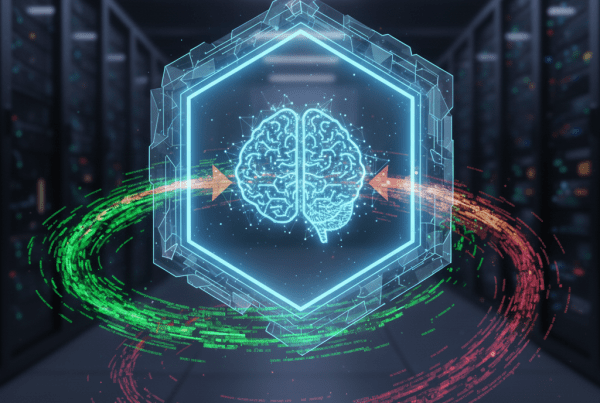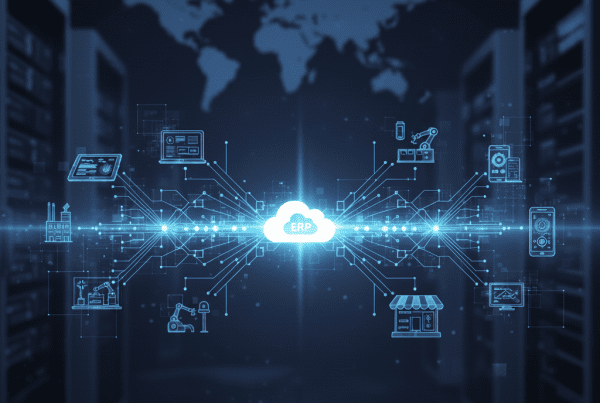As we enter 2024, the field of cybersecurity is on the verge of significant transformations. Not only are cyber threats increasing in frequency, but they are also becoming more advanced, posing a challenge to conventional security practices. Cybersecurity is evolving to meet these challenges head on in 2024.
Here are four cybersecurity trends to watch for this year.
Trend 1: Growing Emphasis on AI and Machine Learning in Cybersecurity
In 2024, AI and Machine Learning (ML) will have a crucial role in cybersecurity. AI’s advanced data analysis capabilities are increasingly used to identify and predict cyber threats, improving early detection systems. ML algorithms are evolving to better recognize and respond to new threats, enhancing defensive measures over time. In 2024, expect AI algorithms to provide real-time threat analysis, enabling faster and more accurate responses to cyber incidents. ML will also advance to autonomously adapt and update cybersecurity protocols, reducing the need for manual updates.
Additionally, we may see the emergence of AI-driven security bots that independently identify and neutralize cyber threats. This development will make network security more proactive and less reactive. These advancements signify a shift towards more intelligent and autonomous cybersecurity systems, driven by the progress in AI and ML technologies.
Trend 2: Continued Evolution of Phishing
One of the prominent trends anticipated in 2024 is the increased use of generative AI in phishing campaigns, making it significantly more challenging to detect and resulting in a higher risk of endpoint compromise. Attackers will leverage this technology to automate the creation of emails in lesser-known languages and gather information from public platforms like LinkedIn to personalize social engineering attacks on a large scale.
Once threat actors gain access to an email account, they will be able to automatically scan conversations, contacts, and attachments. They can then send back modified versions of documents with embedded malware, making it extremely difficult for users to identify malicious activity. Previously, personalizing attacks required human involvement, but the automation capabilities offered by generative AI present a real challenge for security teams. With advanced threat detection systems and artificial intelligence algorithms, security teams can better identify and mitigate these sophisticated attacks.

Trend 3: The Impact of Quantum Computing on Cybersecurity
In 2024, the field of quantum computing is making significant strides, revolutionizing data processing and problem-solving. Unlike classical computing, which uses bits represented as either 0s or 1s, quantum computing operates with qubits that can exist in multiple states simultaneously due to quantum superposition. This unique characteristic enables quantum computers to process vast amounts of data at unprecedented speeds, solving complex problems much more efficiently than traditional computers.
The rise of quantum computing brings both opportunities and challenges for cybersecurity. On one hand, its immense processing power holds the potential to strengthen cybersecurity measures. Quantum computing can enhance encryption methods, develop more advanced algorithms for detecting cyber threats, and facilitate large-scale, secure data operations.
On the other hand, quantum computing poses significant risks to current cybersecurity protocols. Its ability to quickly break traditional encryption methods, such as RSA and ECC, could render many existing security systems vulnerable. This vulnerability highlights the urgent need for the development of post-quantum cryptography, which focuses on creating encryption techniques resistant to quantum attacks.
Trend 4: Zero Trust Security
Unlike traditional security models that focus on securing the perimeter, Zero Trust operates on the principle of “never trust, always verify.” It acknowledges the presence of threats both outside and inside the network.
In a Zero Trust model, every access request, regardless of its source or network, is treated as a potential threat. This means implementing rigorous identity verification, strict access controls, and continuous monitoring of network activities. Zero Trust involves a comprehensive approach to cybersecurity, including user authentication, endpoint security, and limited access privileges.
One of the key advantages of Zero Trust is its ability to mitigate risks posed by insider threats and attackers moving laterally within a network. As organizations embrace cloud services and remote work models, Zero Trust becomes even more relevant by offering a flexible and adaptive approach to securing diverse and distributed IT environments.
The field of cybersecurity is undergoing significant transformations in 2024. AI and Machine Learning will play a crucial role, providing real-time threat analysis and updating security protocols autonomously. Phishing attacks will evolve with generative AI, making detection harder and increasing endpoint compromise risks. The rise of quantum computing brings both opportunities and challenges, requiring post-quantum cryptography development. Zero Trust security becomes more relevant as organizations embrace cloud services and remote work models, focusing on identity verification and continuous monitoring. Stay informed and adapt to these trends to fortify your cybersecurity defenses in 2024.
About Atlantic, Tomorrow’s Office
Atlantic is an award-winning office technology and IT solutions company providing Imaging Products, IT Support, Document Management, Cybersecurity and Managed Services to small and large companies in the New York City metropolitan area, and the Greater Philadelphia and Delaware Valley.
For the latest industry trends and technology insights visit ATO’s main Blog page.




